
The Biblical City: Redux
By Dr. Mark David Major, AICP, CNU-A The Outlaw Urbanist contributor
Can the Holy Bible tell us anything about urbanism?
It might seem unusual to investigate the Holy Bible for information about urbanism but the idea is not completely off-the-wall. In fact, it’s the subject of a fascinating 1997 study, The City in the Bible: A Relational Perspective, by the Jubilee Center in Cambridge, England and commissioned by the Anglican Church of England (Crook, 1997). The Jubilee Centre is a non-profit Christian social reform organization that “offers a biblical perspective on issues and trends of relevance to the general public” (Source: Jubilee Centre). Other writers have also examined biblical descriptions of city planning, such as those found in the Old Testament books of Leviticus and Ezekiel (Gallion and Eisner, 1963; Frick, 1997; Reps, 1979; Hawkins, 1986). However, the most comprehensive research appears to principally derive from a social science or religious studies perspective instead of architecture or urban planning. In part, this is understandable since it’s almost impossible to separate religious doctrine from any investigation of the Holy Bible, whatever the subject. The expressed purpose of the Jubilee Centre study is to explore “God’s view of today’s city (and) how modern Christians should address urban problems” with particular emphasis on the “local action” of Christians in “political and community involvement” (Crook, 1997; 5-6).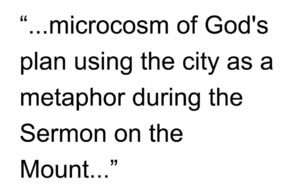
Crook (1997) correctly points out the commonly accepted, anti-urban stereotype of the Holy Bible – and presumably of God, which reached its apex beginning in the 19th century with social reformers such as Ebenezer Howard, persisting to this day – derives from popular culture perception of its most famous stories; the Garden of Eden, the construction of the Tower of Babel as a rebellion against God, God’s wrath against Sodom and Gomorrah, Jewish revolts against Rome, and Jesus’ entry/subsequent crucifixion in Jerusalem. It is an incomplete picture but even Crook is somewhat guilty of playing to this anti-urban stereotype in his 1997 study, arguing cities began and continue “in sin and rebellion… violence… corruption and oppression” (7). This statement can be equally applied to humanity in general, and not necessarily only cities in particular. However, the overwhelming majority of references to the city in the Holy Bible are neutral (see The Biblical City, Part 2), and the two most important in the New Testament are positive. As Crook (1997) concedes, “cities… represent a microcosm of God’s redemptive plan. The Bible begins in a perfect garden, but ends in a redeemed city, the New Jerusalem” (6). Jesus first introduces this microcosm of God’s plan using the city as a metaphor during the Sermon on the Mount, saying, “You are light for the world. A city built on a hill-top cannot be hidden” (NJB Matthew 5:14). In 1630, this was the source for Puritan John Winthrop’s sermon, “A Model of Christian Charity”, promoting a “city on a hill” that would become Boston. During the 20th century, John F. Kennedy and Ronald Reagan expanded on this reference in expressing an ideal of American exceptionalism as “a shining city on a hill” and a model for the entire world. In all three cases, the city is presented as an ideal to achieve (be it God’s salvation, Christian charity, or American exceptionalism) and not merely a hotbed for sin, violence, and corruption. One is forced to wonder how our planning of contemporary cities might be improved if we started from the premise that the city is a Divine ideal to achieve instead of an Earthly problem to solve.
References
Crook, A. 1997. The City in the Bible: A Relational Perspective. Cambridge, England: Jubilee Centre. Report commission by the Anglican Church of England.
Frick, F. 1977. The City in Ancient Israel. Princeton: SBL Dissertation Series 36.
Gallion, A.B. and S. Eisner. 1963. The Urban Pattern: City Planning and Design, Second Edition. Princeton: D. Van Nostrand Company, Inc.
Hawkins, P. 1986. Civitas: Religious Interpretations of the City. Atlanta, Georgia: Scholars Press Studies in the Humanities.
Reps, John W. 1979. Cities of the American West: A History of Frontier Urban Planning. Princeton, NJ: Princeton University Press.
NEXT: The City of Wisdom
The Biblical City is a new series from The Outlaw Urbanist.

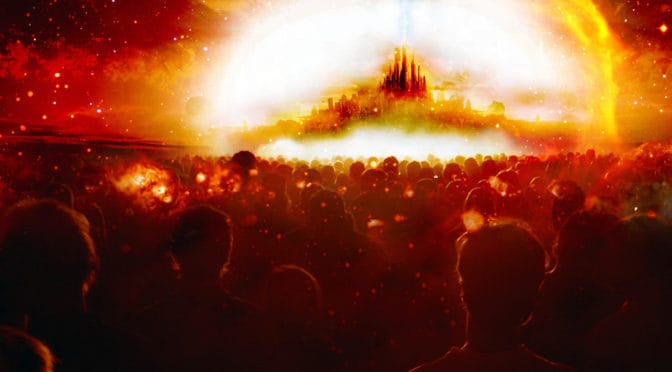
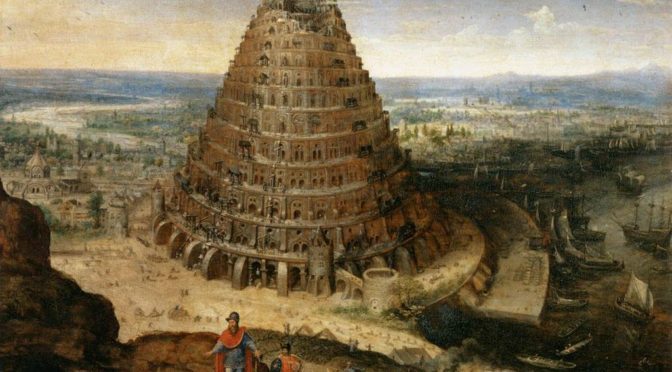
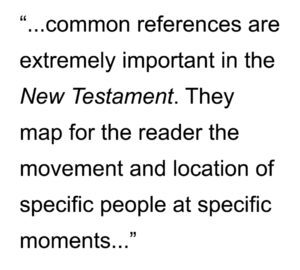 These common references are extremely important in the New Testament. They map for the reader the movement and location of specific people at specific moments, most usually Jesus and his Apostles, or in recounting past events/parables during the course of the primary action of a specific text. More than a third (36%) of the common references are a non-possessive, non-relational subject or object (direct or indirect) of a sentence. (e.g. “The city was…” or “…a city”). Again, this often occurs after a proper name was previously used in the text (i.e. we already know where the action is taking place). Finally, only eleven percent (11%) of the common references in the New Testament are possessive nouns (e.g. “the priests of the city”). These possessive nouns are often important for denoting differences; for example, between insider (e.g. resident or citizen) and outsider (e.g. visitor or stranger), the powerful (e.g. priests) and the powerless (e.g. poor), or other such relationships presented as a dichotomy in the narrative.
These common references are extremely important in the New Testament. They map for the reader the movement and location of specific people at specific moments, most usually Jesus and his Apostles, or in recounting past events/parables during the course of the primary action of a specific text. More than a third (36%) of the common references are a non-possessive, non-relational subject or object (direct or indirect) of a sentence. (e.g. “The city was…” or “…a city”). Again, this often occurs after a proper name was previously used in the text (i.e. we already know where the action is taking place). Finally, only eleven percent (11%) of the common references in the New Testament are possessive nouns (e.g. “the priests of the city”). These possessive nouns are often important for denoting differences; for example, between insider (e.g. resident or citizen) and outsider (e.g. visitor or stranger), the powerful (e.g. priests) and the powerless (e.g. poor), or other such relationships presented as a dichotomy in the narrative.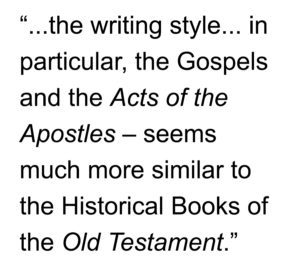 Nearly three hundred (300) or forty-two percent (42%) of the common references to the city in Old Testament are nouns denoting the location/direction of a specific person in space. However, the Historical Books deploy these common references at a greater frequency than the rest of the Old Testament. Over forty-five percent (45%) of the common references to the city in the Old Testament occur in the Historical Books. Finally, about thirty-one percent (31%) of the common references to the city in the Old Testament are a non-possessive, non-relational subject or object (direct or indirect) of a sentence. What this suggests, whatever you might believe, is the writers of the Gospels and Acts believed they were writing histories and adopted the appropriate writing style for that endeavor drawing upon the model of Old Testament texts.
Nearly three hundred (300) or forty-two percent (42%) of the common references to the city in Old Testament are nouns denoting the location/direction of a specific person in space. However, the Historical Books deploy these common references at a greater frequency than the rest of the Old Testament. Over forty-five percent (45%) of the common references to the city in the Old Testament occur in the Historical Books. Finally, about thirty-one percent (31%) of the common references to the city in the Old Testament are a non-possessive, non-relational subject or object (direct or indirect) of a sentence. What this suggests, whatever you might believe, is the writers of the Gospels and Acts believed they were writing histories and adopted the appropriate writing style for that endeavor drawing upon the model of Old Testament texts.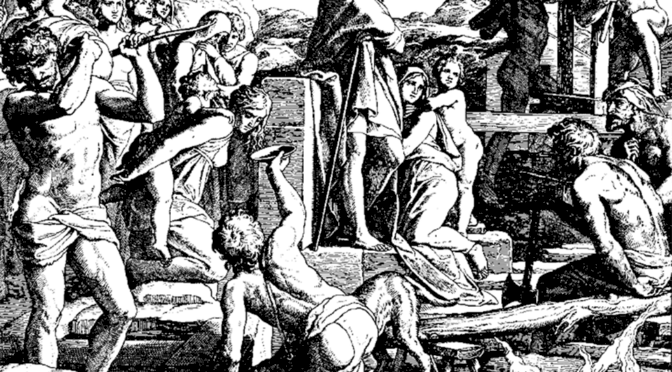
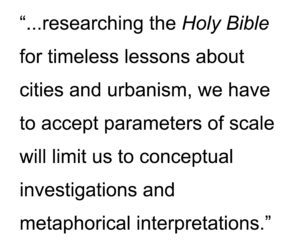 The ancient concept of a city is remarkably different to our modern one due to radical differences in population. World population is generally estimated at between 15-60 million people before the 4th century AD height of the Roman Empire. World population today is more than 7 billion people or approximately 100-500 times greater, depending upon scholarly estimates for ancient populations. The modern megalopolis would have been unimaginable to our ancient ancestors. We also have to accept the limits of translation. Biblical texts have been translated time and time again over the ages. What we might find in researching the Holy Bible will be heavily dependent upon how these ancient texts were translated in the past, hereby affecting our interpretation of the material today. This article initially relies upon the King James (KJB) version of the Holy Bible but also uses the Catholic New Jerusalem Bible (NJB) (translated “directly from the Hebrew, Greek or Aramaic” according to the Roman Catholic Church) as a double-check for translation issues. It is likely this is insufficient. However, it is a good place to start if we actually hope to say anything on the subject during a single lifetime.
The ancient concept of a city is remarkably different to our modern one due to radical differences in population. World population is generally estimated at between 15-60 million people before the 4th century AD height of the Roman Empire. World population today is more than 7 billion people or approximately 100-500 times greater, depending upon scholarly estimates for ancient populations. The modern megalopolis would have been unimaginable to our ancient ancestors. We also have to accept the limits of translation. Biblical texts have been translated time and time again over the ages. What we might find in researching the Holy Bible will be heavily dependent upon how these ancient texts were translated in the past, hereby affecting our interpretation of the material today. This article initially relies upon the King James (KJB) version of the Holy Bible but also uses the Catholic New Jerusalem Bible (NJB) (translated “directly from the Hebrew, Greek or Aramaic” according to the Roman Catholic Church) as a double-check for translation issues. It is likely this is insufficient. However, it is a good place to start if we actually hope to say anything on the subject during a single lifetime. The first city mentioned in the Holy Bible is Enoch, built by Cain and named after his son (NJB Genesis 4:17. “Cain had intercourse with his wife, and she conceived and gave birth to Enoch. He became the founder of a city and gave the city the name of his son Enoch”). Some argue Cain’s Enoch is the ancient Mesopotamian city of Uruk, which was famous as the capital city of Gilgamesh, hero of the Epic of Gilgamesh. However, it is more generally accepted that Uruk is the biblical Erech, said to be founded by Nimrod, who was the great-grandson of Noah. In any case, considering he famously murdered his brother Abel (KJB Genesis 4:9 “Am I my brother’s keeper?”), Cain represents a rather inauspicious father figure for city builders and planners. One could argue (tongue-firmly-in-cheek), this represents the original sin of the planning profession for which they still seek amends to this day as modern planners explicitly desire to be their “brother’s keeper”.
The first city mentioned in the Holy Bible is Enoch, built by Cain and named after his son (NJB Genesis 4:17. “Cain had intercourse with his wife, and she conceived and gave birth to Enoch. He became the founder of a city and gave the city the name of his son Enoch”). Some argue Cain’s Enoch is the ancient Mesopotamian city of Uruk, which was famous as the capital city of Gilgamesh, hero of the Epic of Gilgamesh. However, it is more generally accepted that Uruk is the biblical Erech, said to be founded by Nimrod, who was the great-grandson of Noah. In any case, considering he famously murdered his brother Abel (KJB Genesis 4:9 “Am I my brother’s keeper?”), Cain represents a rather inauspicious father figure for city builders and planners. One could argue (tongue-firmly-in-cheek), this represents the original sin of the planning profession for which they still seek amends to this day as modern planners explicitly desire to be their “brother’s keeper”.